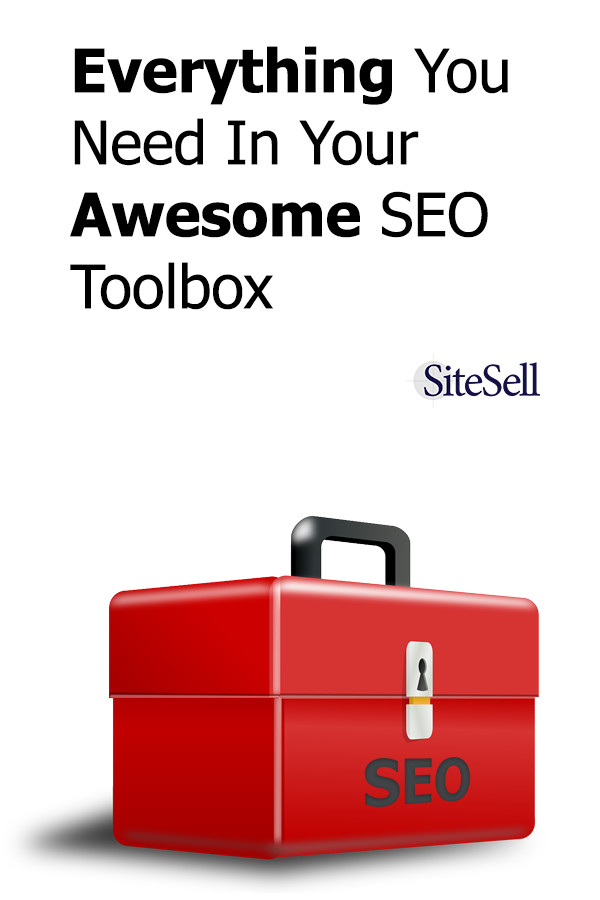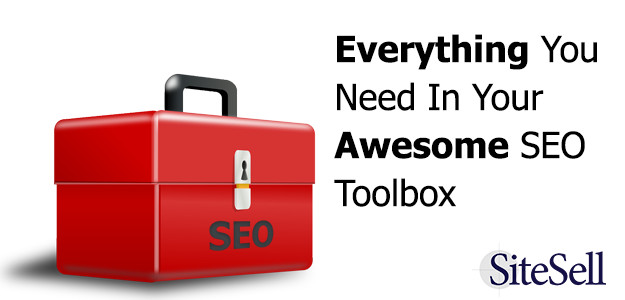Today’s SEO covers these three topics:
- on-page SEO (e.g., focusing on one keyword per page, getting that keyword and synonyms in the content enough times that the engines know what the page is about)
- off-page SEO (e.g., getting links to the site, improving the bounce rate)
- technical SEO (e.g., page speed, mobile-friendliness, avoiding duplicate content)
During the early days of the Internet, if you wanted your website to rank well in the search engines, all you had to do was get the “on-page” ranking criteria right to achieve a positive result. In other words, you optimized each page for a specific keyword and the organic search traffic appeared.
Fast forward past Google’s Caffeine, Panda, Penguin, Hummingbird, Authorship, “Mobilegeddon” and many other algorithmic changes and ask SEO experts if life is different now vs. then.
Most of them would probably say “yeah, SEO has evolved.”
But has it?
Since the inception of SiteSell’s flagship product, SBI!, we promote these time-tested principles (embodied within the Action Guide, tools, members-only articles and other resources):
- conduct research to understand the market demand for your niche and specific topics within your niche
- write high quality, original content about these topics
- publish keyword-focused content pages within a 3-tier structure that makes it easy for humans and spiders to reach those pages
- get your “voice” and valuable PREselling proposition right, and encourage visitors to take your desired action (i.e., your most wanted response)
- convert casual visitors to a captive audience that consumes your content, purchases your products and services, and recommends you to friends, family and colleagues
Throughout the years we’ve advised our customers to stay focused, to ignore the distractions, to not get caught up in the “SEO fads” (e.g., building backlinks, keyword stuffing, hidden text).
Getting the On-Page SEO Right
For over a decade, SBI!’s sitebuilding toolset includes a module called Analyze It! (AI!).
AI! tells site owners exactly what must be added or removed from a page (before it’s published) so that the search engines will know what the page is about. This makes it easier to rank for that keyword in search results.
AI! assessment is not restricted to keyword density (the number of times the page’s main keyword should appear on the page). It also advises on page length (# of words) and required page elements (subheadings, headlines, images).
And while getting the number and placement of the focus keyword on the page is important, what’s also important is making that content useful to visitors.
We provide flagship e-books such as “Make Your Content PREsell” and “Make Your Words Sell” to give SBIers sound and practical advice for writing content that converts.
Off-Page SEO
As Google emerged as a major contender in the search engine space, it put the focus on off-page criteria, which slowly grew in importance. Things like time spent on the page (make it high), the bounce rate (keep it low), links to the site from other sites (which affects PageRank).
We advised SBI! users to keep their inbound linking real.
What do we mean by that?
For many years, article marketing and directory submissions were a very popular way to get inbound links to a website.
We explained the pitfalls of both these link-building schemes, years before Penguin hammered most sites that participated in these schemes.
Our advice has remained the same over the years – publish content that’s so valuable it earns links from other sites.
Technical SEO
Search engine optimization (SEO) specialists have spun off a third type of optimization—technical SEO to cover factors that are not covered in on-page or off-page. In other words, it covers optimization that doesn’t affect the text on the page or the behavior of visitors while on a page.
Some of these criteria weren’t factors a few years ago. Others were, but weren’t that important. However, as they have grown in importance, SBI! expanded to include these criteria.
Page Speed
Page speed was a complete non-issue in the early days of the Web. Pages were mostly text, and if there were images, they were small. Now, people want performance.
More than 3 seconds to load a page? Bye-bye page visitor.
So one of the most important tasks for any webmaster is optimizing images and other content. SBI!’s in-house articles cover how to use TinyPNG and jpegMini to compress image files.
And SBI! itself uses Google PageSpeed to optimize those images, along with other parts of a page, to ensure a fast load time.
Mobile Friendliness
Google announced in the spring of 2015 that it would start taking mobile “friendliness” into account in its mobile search results.
Dubbed “Mobilegeddon” this algorithm didn’t punish as many sites as the experts thought it would, likely because Google gave webmasters a lot of time to make adjustments to their sites.
Most SBIers had little work to do to comply, since our Mobilize It! tool had already been out for over a year before Google’s deadline.
To ensure that SBIers had the most choice, we released the first batch of fully responsive, fully customizable designs to coincide with the Mobilegeddon deadline. And we continue to add new responsive designs to ensure content always displays optimally for mobile visitors.
Site Architecture
How your site is laid out is also important for SEO. And this is where SBI! has outshone the competition for years.
“Silo”ing content is another way of describing what we call a site content blueprint. It’s structure is like a pyramid.
Pages aren’t published willy-nilly.
Following the SBI! Action Guide, we encourage customers to think through and develop the architecture of the entire site before the home page is published.
Each content “silo” is what we call a Tier 2 section, comprised of a keyword focused content page (KFCP) that the home page links to, plus all the pages that explore the topic of that particular page. These pages make up Tier 3, the child pages of the Tier 2 page.
This is what the website architecture looks like…
XML Sitemap
An XML sitemap is a file that lists every page on a site. It can also list every image on the site.
SBI! has been creating a sitemap for every site since 2007. And we improved the tool by adding images to the XML file when the search engines offered the same improvement several years ago.
So there’s literally nothing to do once the sitemap has been submitted to Google and Bing. SBI! automatically updates the file when pages are published or edited, or when they’re deleted from the site. And it then pings the engines to tell them about the changes to the site.
Reducing the Number of Crawl Errors
Crawl errors occur when the search engines cannot reach a page when another page links to it. Many of these links may be from other sites. There isn’t a lot to be done about those. The rest, however, are broken links from inside the site, from one page to another.
SBI!’s Link Fix It! tool regularly scans EVERY PAGE of each site and sends an email report to the site owner to reveal broken links (internal and external). For SBIers it’s a simple task of following the report and editing each page to fix the broken link.
The 404 (Page Not Found) Page
Even if every link on your site is perfect, other webmasters may link to your site incorrectly. Visitors clicking on those bad links will see your 404 page. It’s important that you don’t just give them a generic 404 that provides no advice on where to go to find what they’re looking for.
That’s why SBI! builds a fully customizable 404 page as soon as the home page is published.
Duplicate Meta Content
Earlier in this article, we mentioned that technical SEO is about optimizing everything that isn’t the text on the page (on-page criteria) or off-page criteria.
Technical SEO also covers the invisible content, known as the meta content. This includes the title of the page (found in the title tag) and the meta description.
The SBI! Action Guide advises SBIers to create a unique title and meta description for each page.
SBI!’s BlockBuilder gives recommended lengths for metadata. And it requires both a title and a meta description be present before the page can be published.
So it’s unlikely that a check in Google Search Console (formerly Webmaster Tools) will reveal problems with titles and meta descriptions for an SBI! user’s site.
Canonical Tags
It’s possible for the search engines to see several different versions of a page, even though only one version is published on your site. Some webmasters may link to the www version, while others link to the version without www. For the home page, even more may link to the index.html (or index.php) version.
The search engines consider each of these to be a different page, so there’s a risk of a duplicate content penalty.
For online stores, there may be parameters added to the end of the URL that create, in the eyes of the search engines, multiple versions of the same page.
A canonical tag, placed in the head section of the page, tells the engines which version is the version to index, regardless of what the inbound link or the internal link says.
SBI! has been providing the canonical tag for each live page for several years now. Done automatically when the page is published, the default can also be overridden if there’s a special need for a page to have a different canonical tag.
SBI! and SEO
While social media have increased in importance as drivers of traffic to your site, search engines are still more important. They send more traffic, and it’s targeted traffic, which is the only kind you want (unless you just want to pad your statistics for bragging rights).
With the continued need for search traffic, SEO always will be a part of ensuring that your pages rank well with the search engines.
From SiteSell’s perspective, we want every SBIer to have all the tools, tips and advice to ensure SEO principles are not forgotten or ignored, whether it’s on-page, off-page, or technical criteria.
Which means SBIers can get on with growing their online business. Join the SBI! community today and start building yours.


SiteSell Content Team

Latest posts by SiteSell Content Team (see all)
- Solopreneurs: Do NOT Allow Regulations to Kill Your Online Business - January 11, 2016
- Chickens by Email: How One Solopreneur Rose to the Top - January 6, 2016
- Auto-Responders: What Are They, and Why Should you Have One? - December 15, 2015



